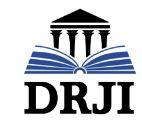R-W-C-R-R Policy
Article Retraction
At Dharmawangsa International Journal of The Social Sciences, Education and Humanities, we are committed to maintaining the academic record's integrity; consequently, there are times when articles must be retracted. Retraction of an article would occur for the following reasons:
- If there are significant scientific errors, the article's conclusion will be invalidated. For instance, when there is evidence that the article's findings are unreliable due to an honest error – a miscalculation or experimental error – or to misconduct – data fabrication.
- If the research and subsequent findings have been published elsewhere without proper cross-referencing, justification, or permission – this is referred to as a redundant publication.
- If there are concerns about plagiarism – the use of words from another publication without giving credit – or improper authorship.
To ensure that retractions are handled in accordance with accepted publishing practices and also with COPE guidelines, Dharmawangsa International Journal of The Social Sciences, Education and Humanities employs the following recreation process:
- Any article that may require revision should be brought to the editor's attention.
- Once this is completed, the journal editor will follow the guidelines outlined in the COPE flow chart – this includes evaluating the author's responses to specific questions.
- The editor's findings are then forwarded to the Ethics Advisory Board for review and approval before any action is taken. This step is taken to ensure that these situations are handled consistently and in accordance with industry best practices.
- The decision on whether or not to retract the publication is communicated to the author and, if necessary, to other relevant bodies such as the author's institution.
- Once all of this is complete, a retraction statement is posted online and then published in the journal's next available issue – we will go into greater detail about this step as we proceed.
Nota bene: even if an author retains copyright for an article, this does not entitle them to retract it following publication. The integrity of the public scientific record is critical, and in such cases, COPE's Retraction Guidelines apply.
Article Withdrawal
An author does not have the authority to withdraw a submitted manuscript. This is because referees, editors, and publishers have invested significant time in editing and processing the submitted manuscript, rendering the abrupt retraction a waste of valuable resources. Before an author submits a manuscript via our Open Journal System, the author must complete the following checklist:
- If an author requests the removal or withdrawal of his or her manuscript while it is still in the peer-review process, the author would be banned to submit their manuscript to Dharmawangsa International Journal of The Social Sciences, Education and Humanities.
- If an author wishes to withdraw an article after it has been accepted for publication, the author would be blacklisted for two years in Dharmawangsa International Journal of The Social Sciences, Education and Humanities.
- If the article was published as an "Article in Press" – articles that have been accepted for publication but are not yet complete – and contains errors, violates the Journal's publishing ethics guidelines as viewed by editors, or was discovered to be a duplicate of another published article, or was withdrawn, the author would be blacklisted for three years in Dharmawangsa International Journal of The Social Sciences, Education and Humanities. The term "Withdrawn" indicates that the article's content has been replaced by a PDF or HTML page announcing the article's withdrawal.
- If an author requests to withdraw a manuscript, the Principal Editor must receive an official letter signed by the corresponding agency leader and the author.
Article Correction
Dharmawangsa International Journal of The Social Sciences, Education and Humanities will consider issuing a correction if the following occurs:
- A small section of a reputable publication contains erroneous data that mislead as a result of an honest error.
- The Contributor list or Author is incorrect (e.g., a deserving author has been omitted, and an individual who does not meet the criteria for authorship has been included).
Corrections to peer-reviewed content are classified into three types:
- Publisher correction (erratum): this serves to inform readers of a significant error made by the publishing staff that has a detrimental effect on the publication record, the scientific veracity of the article, or the Journal's or authors' reputation.
- Author correction (corrigendum): this also serves to notify a reader of an author error that jeopardizes the scientific integrity of a publication record or the author's reputation.
- Addendum: This is where the author adds to the article to clarify inconsistencies and expand on the existing work or to explain or update the information contained in the main work.
The editor of a journal makes the decision whether to issue a correction, sometimes with the assistance of Reviewers or Editorial Board Members. Handling Editors will contact the authors of the relevant paper to request clarification, but the final decision on whether a correction is required and, if so, what type of correction is required rests with the editors.
Article Removal
In a small number of instances, it may be necessary to remove a published article from an online platform. This would occur only if the article is defamatory or violates the legal rights of others, or if we have reasonable grounds to believe that publication would result in certain court orders. While the article's metadata is retained, the text is replaced with another screen indicating that the article has been removed to avoid legal complications.
Article Replacement
At some point, the author of a flawed original paper may wish to withdraw or retract it and replace it with a corrected version. Under these circumstances, the retraction procedure would be followed, with the exception that the retraction notice for the article would include a link to the – corrected – re-published article alongside the document's history

11.jpg)
















